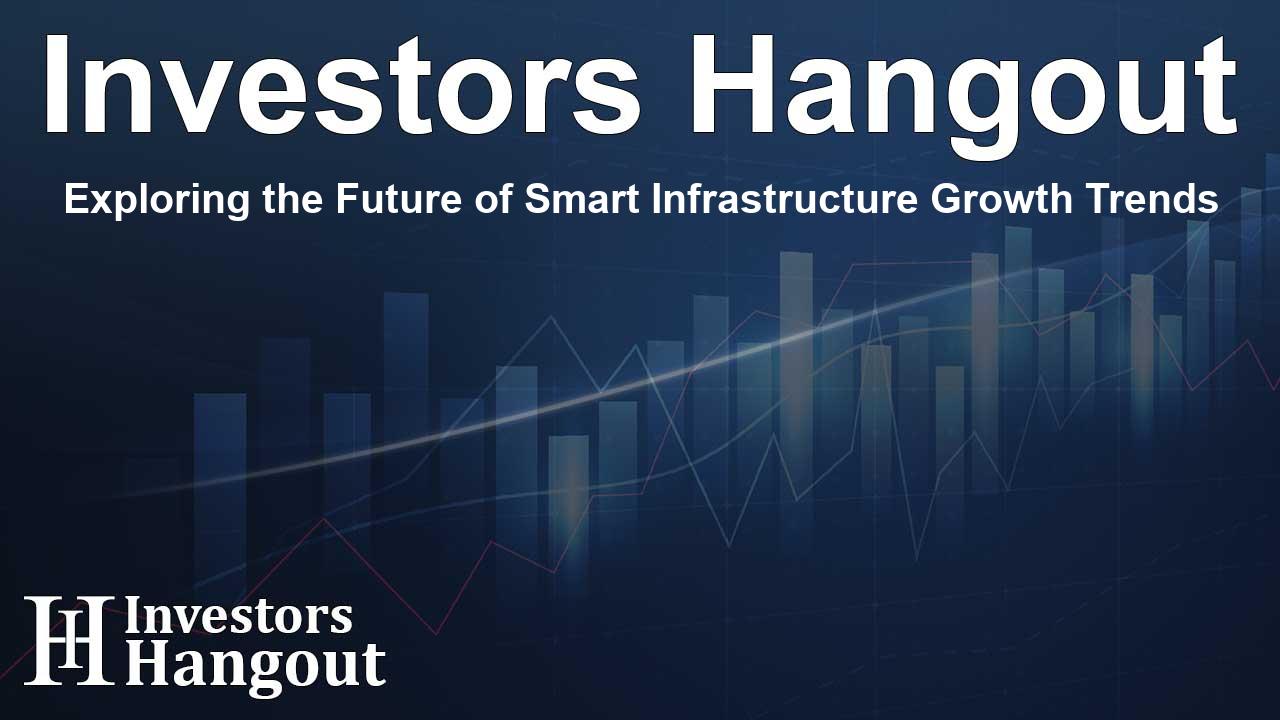Exploring the Future of Smart Infrastructure Growth Trends

Smart Infrastructure Market Overview
The global smart infrastructure market is on a remarkable growth trajectory, with estimates suggesting a potential market size of USD 2,745.9 billion by 2031. This significant expansion is anticipated to occur at an impressive CAGR of 18.3% from 2025 onwards, as urbanization and the development of smart cities take center stage.
Market Growth Drivers
The driving forces behind this market surge include rapid urbanization and encouraging government policies that stimulate the proliferation of smart technologies. The Insight Partners recently published a comprehensive report outlining the key factors fueling the demand for smart infrastructure solutions. These solutions are designed to enhance the efficiency and sustainability of urban environments while catering to the growing population's needs.
Urbanization Trends
With an increasing portion of the population migrating to urban areas, the pressure for advanced infrastructure solutions is more pressing than ever. Projections from the United Nations indicate that up to 68% of the world's population could reside in urban centers by 2050. Countries like China illustrate this shift dramatically, escalating their urbanization rate significantly over recent decades. The growing density in urban habitats necessitates smart infrastructure to manage resources efficiently and sustain quality of life.
Regional Market Insights
Regionally, the smart infrastructure market reflects diverse growth opportunities. Europe has emerged as a strong contender, with substantial public investments directed towards sustainable transportation systems. Important initiatives, such as the European Commission's funding for key transport projects, signal a robust commitment to modernizing infrastructure and addressing climate change challenges.
Investment Trends
Approximately 83% of public funding in Europe is strategically allocated to projects that align with climate objectives. Significant investments focus on enhancing the efficiency of transport networks, particularly railways and inland waterways. Such commitments facilitate developing greener transport solutions, facilitating a substantive transformation in infrastructure reliability.
Key Developments in Smart Infrastructure
As we delve deeper into the smart infrastructure ecosystem, various trends and technological advancements become evident. Notable among them are the integration of digital twins for infrastructure management, alongside the utilization of artificial intelligence (AI) and machine learning. These trends are pivotal in increasing infrastructure resilience and enabling smarter urban planning.
Technology Integration
Moreover, the penetration of advanced technologies—such as IoT and real-time data analytics—enhances operational efficiencies within existing infrastructures. Cities are rapidly adopting these technologies, laying the groundwork for the next generation of infrastructure that thrives on interconnectivity and adaptability.
Market Segmentation
The smart infrastructure landscape is composed of various segments, including hardware, software, and services. These segments are further categorized based on focus areas. Key domains include smart transportation, smart utilities, and smart buildings, each representing substantial growth potential. This segmentation enables solutions to be tailored to the specific needs of diverse end users, including commercial and industrial sectors.
Competitive Landscape
Several major players, including Schneider Electric, Siemens AG, and Cisco Systems, are actively shaping the smart infrastructure landscape. These companies are at the forefront of innovation, continually developing solutions that enhance urban living and connectivity. As they evolve, the competitive strategies adopted are instrumental in establishing benchmarks for quality and efficiency in smart infrastructure development.
Conclusion: A Forward Outlook
In conclusion, the prospect for smart infrastructure growth is bright, fueled by urbanization trends and technological advancements that promise smarter, more sustainable solutions for cities. The continuous evolution within this sector not only caters to immediate urban challenges but also lays the groundwork for a sustainable future.
Frequently Asked Questions
What drives growth in the smart infrastructure market?
Urbanization, technological advancements, and government policies foster growth in the smart infrastructure market.
What is the projected market size for smart infrastructure by 2031?
The smart infrastructure market is projected to reach USD 2,745.9 billion by 2031.
Which technologies are pivotal in smart infrastructure?
IoT, AI, machine learning, and data analytics are critical technologies in the smart infrastructure sector.
How are public investments influencing smart infrastructure in Europe?
Public investments in Europe focus on sustainability and modernization, promoting extensive development of smart transport systems.
Who are the key players in the smart infrastructure market?
Key players include Schneider Electric, Siemens AG, Cisco Systems, and Honeywell, among others.
About The Author
Contact Olivia Taylor privately here. Or send an email with ATTN: Olivia Taylor as the subject to contact@investorshangout.com.
About Investors Hangout
Investors Hangout is a leading online stock forum for financial discussion and learning, offering a wide range of free tools and resources. It draws in traders of all levels, who exchange market knowledge, investigate trading tactics, and keep an eye on industry developments in real time. Featuring financial articles, stock message boards, quotes, charts, company profiles, and live news updates. Through cooperative learning and a wealth of informational resources, it helps users from novices creating their first portfolios to experts honing their techniques. Join Investors Hangout today: https://investorshangout.com/
The content of this article is based on factual, publicly available information and does not represent legal, financial, or investment advice. Investors Hangout does not offer financial advice, and the author is not a licensed financial advisor. Consult a qualified advisor before making any financial or investment decisions based on this article. This article should not be considered advice to purchase, sell, or hold any securities or other investments. If any of the material provided here is inaccurate, please contact us for corrections.
